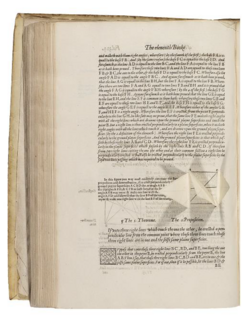‘Babilfrenzo’ at the Bodleian
Anna Aslanyan
The fantasy of a universal language is at least as old as the story of the Tower of Babel, though speaking ‘the same language’ as someone else is no guarantee of understanding them. Babel: Adventures in Translation, an exhibition at the Bodleian Library until 2 June, begins with monolingual dictionaries: A Table Alphabeticall, compiled by Robert Cawdrey and published in 1604; and Richard Head’s compendium of criminal slang, An Alphabetical Canting Vocabulary, printed in 1673. It defines ‘booz’ as ‘drink’, ‘been darkmans’ as ‘good night’, and ‘bite the roger’ as ‘steal the portmanteau’.
The Bible is itself a useful ‘debabelisation’ tool. Translations of it, as Matthew Reynolds writes in his contribution to the book accompanying the exhibition, led to ‘extraordinary feats of scholarship and book-making’, some of them on display at the Bodleian. A 1602 Bishops’ Bible has marginal notes by some of the King James translators; the Complutensian Polyglot, created in Spain in the 16th century, contains parallel texts in Hebrew, Greek, Latin and Aramaic. The number of languages the entire Bible has been translated into currently stands at 683, which makes it a handy data corpus for anyone trying to devise a global means of communication for humans and machines alike.
Mathematics is sometimes described as a universal language. The first English version of Euclid’s Elements, translated by Henry Billingsley in 1570, includes pop-up geometric solids. The Welsh mathematician Robert Recorde, in his 1557 book The Whetstone of Witte, introduced the + and – signs into English: the former a stylisation of the Latin word et, the latter derived from meno, once abbreviated as m̄. Recorde also invented the = sign, choosing ‘a paire of paralleles … bicause noe .2. thynges, can be moare equalle’.
People often complain about things being ‘lost in translation’, but Babel demonstrates how much can also be generated by translation: multiple English versions of Homer, for example, from George Chapman's Iliad to Christopher Logue’s War Music. Fairy tales, too, can gain something in translation. Among the Cinderellas featured in the exhibition is Robert Samber’s version of 1729, enhancing Charles Perrault’s tale with some cultural glossing and improvisation: ‘garniture d’Angleterre’, for example, becomes ‘French trimming’. More recently, Donald Broadribb translated Alice through the Looking-Glass into Esperanto, rendering ‘Jabberwocky’ as ‘Babilfrenzo’.
There is a serious – if not yet urgent – need for a universal language in the nuclear industry. We can’t always decipher messages that are barely 3500 years old: there’s a Linear A tablet on show at the Bodleian. How do we tell future generations where nuclear waste, likely to remain dangerous for longer than the lifespan of any known language, is buried? To find a way of making ‘KEEP OUT’ intelligible for millennia, the industry employs philosophers, semioticians, anthropologists and other consultants. Their suggestions include popular superstitions to be passed down the ages by an ‘atomic priesthood’, and symbols that can be incorporated into the imagery of world religions. But will that work? Or will our descendants take such fables in the way that we see the story of the Tower of Babel?

Comments
On the matter of an 'atomic priesthood', I'll pass on Communion.
When it comes to Proust translations, you don’t mention the Penguin team effort which, despite some misgivings, is my favourite.
"Hence, a generative grammar must be a system of rules that can iterate to generate an indefinitely large number of structures. This system of rules can be analyzed into the three major components of a generative grammar: the syntactic, phonological, and semantic components."
It was all like this - like, all narrative and no stories, right? That must say something.